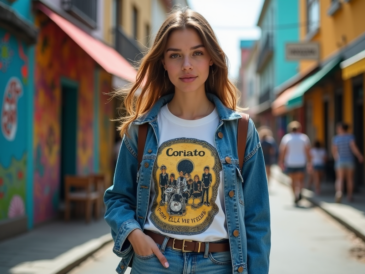When it comes to clothing, fit is everything. A perfectly tailored garment can elevate your style and boost your confidence. This article will explore the significance of a good fit and provide essential tailoring tips to help you look your best.
Why Fit Matters

Fit is one of the most crucial aspects of clothing. A well-fitted outfit not only enhances your appearance but also ensures comfort and ease of movement. Ill-fitting clothes can make you look sloppy and feel uncomfortable, whereas properly fitted garments can highlight your best features and give you a polished look. Tailoring is the key to achieving the perfect fit, transforming even off-the-rack items into something that looks custom-made for you.
Understanding Body Types
Before you can get the perfect fit, it’s essential to understand your body type. Different body shapes require different tailoring techniques. For example, someone with a pear-shaped body may need alterations around the hips and thighs, while someone with an inverted triangle shape might focus on the shoulders and chest. Recognizing your body type will help you pinpoint the areas that need the most alteration and ensure a more flattering fit.
Essential Tailoring Techniques
Accurate measurements are the foundation of good tailoring. Always measure key areas like the bust, waist, hips, and inseam. It’s best to get these measurements taken by a professional, but if that’s not possible, you can do it yourself with a few simple tools. Following standard measurement guidelines ensures that your clothes will fit well and look harmonious.
Some key measurements to consider:
- Bust: Measure around the fullest part of your bust.
- Waist: Measure around the narrowest part of your waist.
- Hips: Measure around the fullest part of your hips.
- Inseam: Measure from the crotch to the bottom of the leg.
Common Alterations
There are several common alterations that can drastically improve the fit of your clothes. Hemming pants or skirts is a straightforward way to adjust the length. Taking in or letting out seams can help ensure a better fit around the torso or hips. Other alterations, like adjusting the sleeves or shoulders, can help achieve a more tailored look. Understanding these basic alterations can help you communicate better with your tailor and gain more satisfaction from your wardrobe.
Choosing the Right Tailor
Choosing a skilled tailor is essential for achieving the perfect fit. Look for tailors with good reviews and a portfolio of their work. A good tailor should be able to listen to your needs, provide sound advice, and execute adjustments flawlessly. Building a relationship with a reliable tailor means that you’ll always have someone to turn to for any future tailoring needs, ensuring your wardrobe remains sharp and well-fitted.
Conclusion
The importance of fit cannot be overstated. A well-tailored garment can completely transform your look and feel, giving you the confidence to face any situation. By understanding your body type, knowing essential measurements and common alterations, and choosing the right tailor, you can achieve a wardrobe that not only fits well but also enhances your best features. Take the time to invest in good tailoring, and you’ll reap the benefits of a polished, professional appearance.
FAQs
1. Why is fit important in clothing?
Fit is important because it enhances your appearance, ensuring comfort and ease of movement. Properly fitted clothes highlight your best features and provide a polished look.
2. How can I find my body type?
You can find your body type by measuring different parts of your body and comparing them to standard body shape charts. Understanding your body type helps pinpoint areas needing alteration.
3. What are the most common clothing alterations?
Common alterations include hemming, taking in or letting out seams, and adjusting sleeves or shoulders. These changes can drastically improve fit and overall appearance.
4. How do I take accurate measurements for tailoring?
Use a tape measure and follow standard guidelines: Bust around the fullest part, waist at the narrowest point, hips around the fullest part, and inseam from crotch to leg bottom.
5. How do I choose a reliable tailor?
Look for a tailor with good reviews and a strong portfolio. They should listen to your needs, provide sound advice, and execute adjustments flawlessly.





